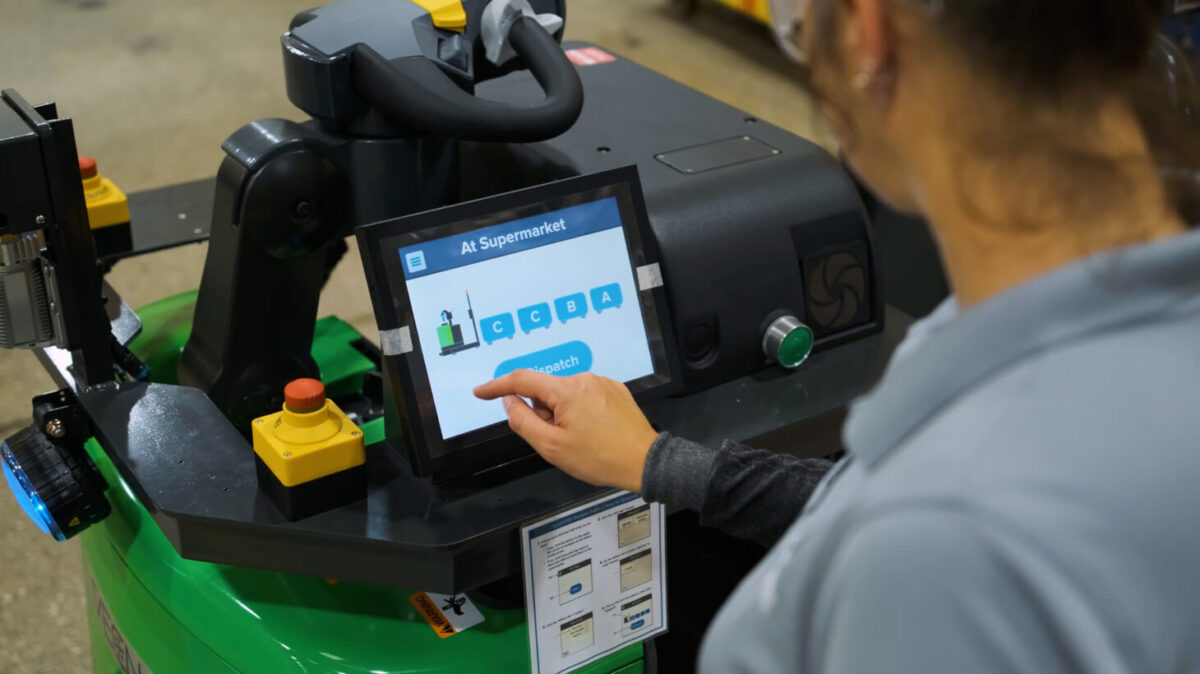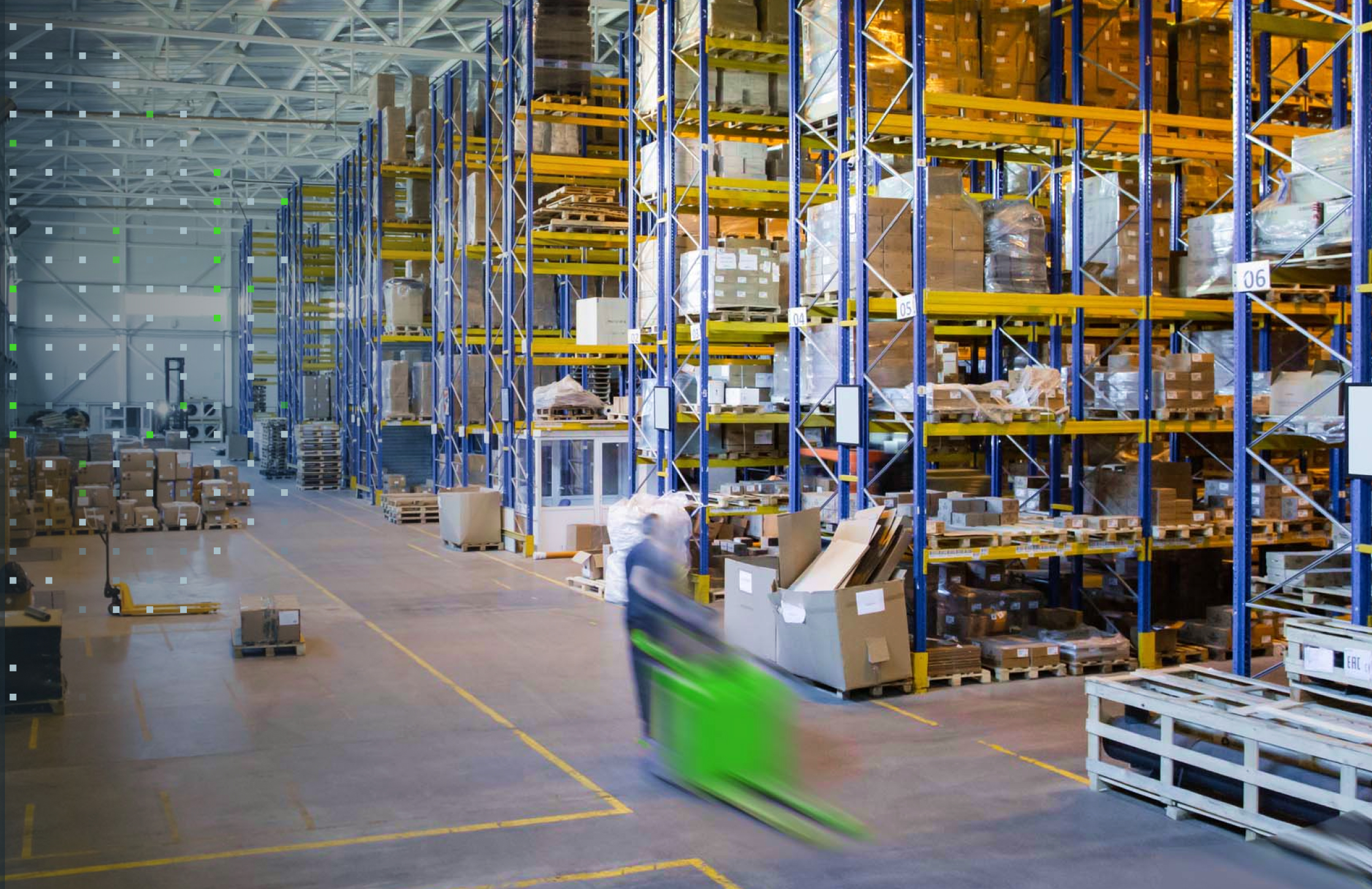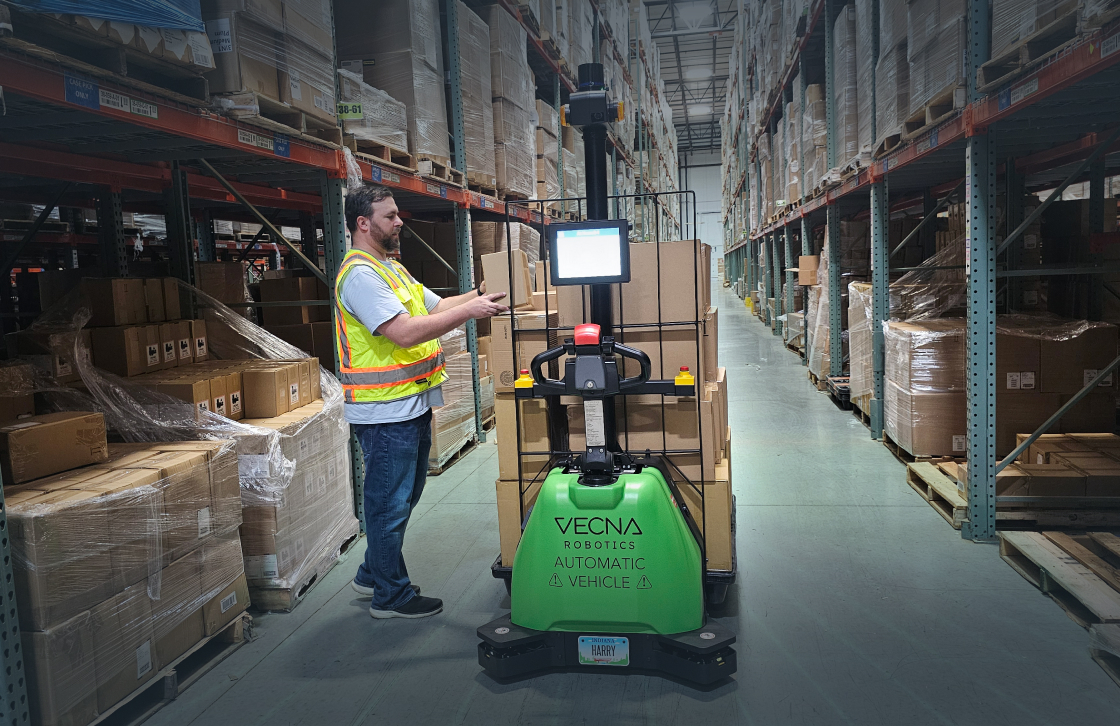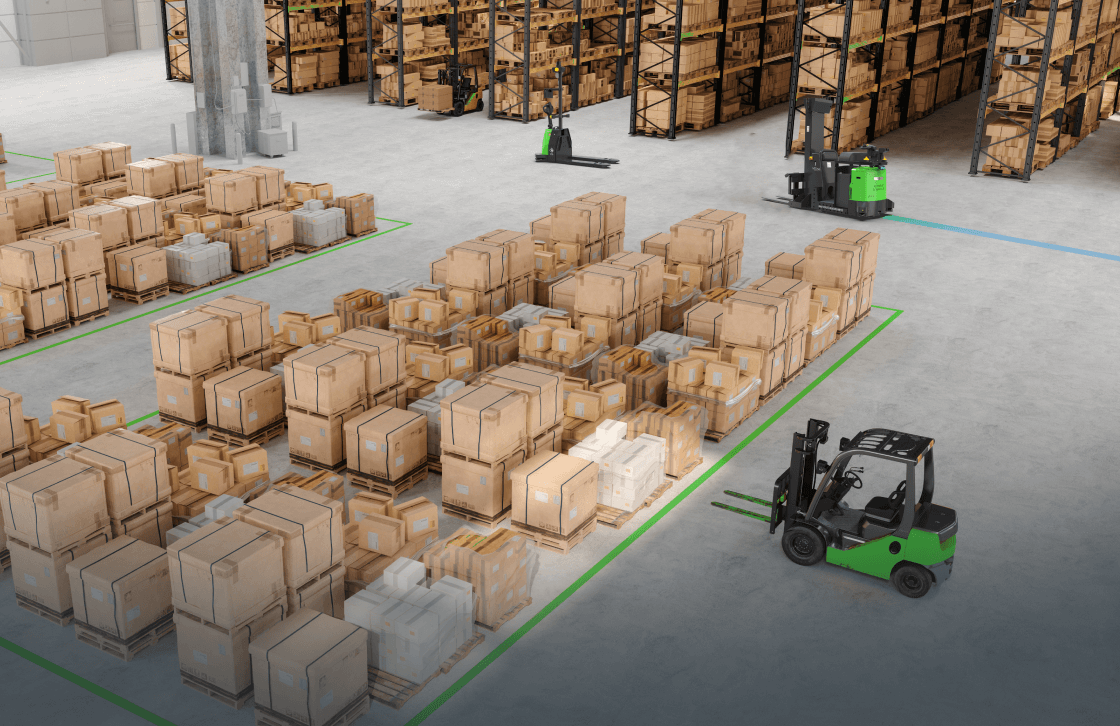Warehouse automation is indeed a game-changer in the logistics and supply chain sectors, heralding a new era of efficiency and accuracy. However, as with any transformative technology, the path to seamless integration isn’t always smooth. The push towards automation requires significant capital investment, strategic planning, and organizational buy-in. Beyond the evident obvious like upfront costs and system compatibility, there are also softer challenges to navigate, such as the cultural shift among the workforce and the need for retraining. Additionally, while the long-term benefits are clear, short-term disruptions can make businesses hesitant. Here, we outline the main challenges of warehouse automation adoption to be mindful of, offering a comprehensive understanding of each and the long-term advantages that make it worth it to embrace automation.
Challenge #1: Cost of technology
One of the biggest challenges of warehouse automation is the cost of the technology. Automated systems can be expensive to purchase and install, and ongoing maintenance costs can also be significant. Organizations must carefully consider the potential return on investment before investing in automation technology.
Solution:
That return on investment can be significant. When viewed as a long-term investment, the advantages of automation often outweigh its costs. For instance, by incorporating technologies such as autonomous mobile robots (AMRs), businesses can witness a two-fold advantage: a reduction in labor expenses and an uptick in operational efficiency. AMRs, adept at performing repetitive chores like barcode scanning, inventory tallying, and order fulfillment, can significantly expedite processes. Their precision and speed ensure that tasks are accomplished without errors, which not only enhances productivity but also ensures consistent quality. Over time, these efficiency gains can translate into substantial cost savings, making the initial investment in automation a profitable decision in the long run.
Challenge #2: Integrating new technology with existing systems
Automated systems often require integration with existing warehouse management systems, transportation management systems, and other technologies. This can be a complex and time-consuming process that requires specialized expertise.
Solution:
While the immediate costs and complexities of blending new automation with established systems can feel prohibitive, the longer-term costs of falling behind in technological advancements are potentially far more detrimental. As the business landscape shifts, driven by rapid technological innovations and changing consumer demands, warehouses that fail to modernize risk becoming obsolete. Therefore, integrating the latest automation technologies is less about immediate cost-saving and more about future-proofing operations. Enlisting expert consultants or partnering with technology providers who offer integration services can help ease this transition. Ultimately, the goal is to ensure the warehouse is resilient and ready to meet tomorrow’s challenges in a tech-dominated marketplace.
Challenge #3: Employee resistance
Employee resistance is another common challenge of warehouse automation. Many employees may be hesitant to embrace new technology or may be concerned about job loss due to automation. Organizations must address these concerns, and provide training and support, to help employees adapt to new technology.
Solution:
Buy-in from employees often hinges on effective communication and framing. Leaders must emphasize that the primary goal of automation is not to replace employees, but rather to amplify their potential. Automation, in many cases, is about augmenting human capabilities: safer working environments due to automated machines like AMRs navigating risk-prone zones, enhanced work-life balance as machines can take over round-the-clock duties, and shifting mundane, repetitive tasks to machines, thereby allowing workers to channel their skills towards more value-added, innovative tasks. In essence, it’s about elevating the roles of employees in a technologically advanced setting, allowing them to thrive in a more dynamic, efficient, and safe environment. Continuous training and re-skilling opportunities should also be a cornerstone of any automation strategy, ensuring that the workforce is empowered to grow alongside the evolving technological landscape.

Challenge #4: Data issues
As warehouse operations increasingly rely on automation, the influx of data generated and stored magnifies the challenges around data security, privacy, and regulatory compliance. Even though some experts believe automation can help with compliance, organizations must implement robust security and data privacy measures to protect sensitive information and comply with relevant regulations.
Solution:
The transformative capabilities of AMRs can play a pivotal role in not only boosting efficiency but also ensuring data accuracy and security. Fitted with advanced sensors and imaging capabilities, they meticulously track product movements and flow within the warehouse, yielding real-time insights into stock positions, throughput rates, and logistical pathways. This real-time tracking aids in identifying inefficiencies and potential vulnerabilities. Also, when integrated with advanced technologies such as RFID tags and emerging 5G networks, AMRs can offer enhanced data security features, such as encrypted transmission and secure storage. This blend of surveillance, secure data handling, and transparency ensures that while warehouses march forward on the automation front, they are also fortified against data-related challenges.
Challenge #5: Setup time & resources
Setup also requires significant investment in terms of time and resources for testing, debugging, and fine-tuning, as well as ongoing maintenance and upgrades. This can be a significant burden for organizations, particularly for those with limited resources or expertise.
Solution:
Choosing a vendor with a more accessible payment structure and better support for implementation can help mitigate this hurdle. With Robots as a Service (RaaS), you get all your hardware, installation, training, maintenance, and support for a one-time fee, which gets you up in running as quickly as possible without worrying about hidden costs.
Challenge #6: Flexibility/Scalability
Flexibility and scalability is another potential hurdle when implementing new technology into warehouses. As demands fluctuate, product lines expand, and operations scale, there’s an imminent need for warehouse automation systems that can not only meet the current demands but also adapt to future challenges. This necessitates an agile framework with the provision for regular maintenance and progressive upgrades.
Solution:
Fortunately, flexibility and scalability are inherent in Vecna RaaS solutions. Our five-step system to go “From No Bot to Robot” empowers warehouses and distribution centers to build customized, rinse-and-repeat automation systems from day one. From the get-go, these systems are engineered to evolve, ensuring businesses are not only equipped for their present needs but are also future-ready. This approach promises not only efficiency but also longevity, maximizing return on investment for businesses.
Looking Closer at the Human Challenge
Ensuring your workers not only adopt warehouse automation but embrace it is a deeply layered issue, rooted in a myriad of concerns and uncertainties worthy of special attention. Foremost among these is the apprehension surrounding job security. Many employees fear that as automation takes over repetitive tasks that don’t necessitate human judgment, their roles might become obsolete. This looming threat of redundancy is further exacerbated by the perception that new technology will demand skills they currently lack, leading to feelings of inadequacy.
Beyond these immediate fears, the broader implications of automation on the nature and dynamics of work cannot be ignored. For some employees, the onset of automation could translate to a shift from hands-on tasks to more supervisory roles, a transition that could be daunting. Others might find the increased interaction with machines unsettling, changing the social dynamics they’ve grown accustomed to in the workplace. There’s also an inherent psychological dimension to this resistance; the idea of ceding control to machines can diminish an employee’s sense of worth and contribution. Moreover, every workplace, including warehouses, is steeped in its own culture and traditions. Introducing automation might be perceived as a disruption of these established norms, leading to resistance from those who are more traditionally inclined.
Addressing these concerns requires a multifaceted approach. Clear and transparent communication from companies about the motivations behind adopting automation and its anticipated benefits is crucial. Such open dialogues can dispel misconceptions and offer clarity. Furthermore, providing training and upskilling opportunities can ease the transition, preparing employees for the new roles and responsibilities that emerge from automation. Involving employees in the decision-making and testing phases can foster a sense of involvement and ownership. It’s also vital to underline the irreplaceable nature of human judgment, creativity, and decision-making. Even as certain tasks become automated, the human touch remains indispensable. Lastly, instituting feedback mechanisms where employees can voice concerns or suggestions can be invaluable in navigating the challenges of automation. Ultimately, while the progression of technology is often inevitable, harmonizing it with the human element is paramount for a successful warehouse automation journey.
Warehouse automation still solves the biggest challenges
With the world transforming into a global marketplace, businesses face challenges in managing an increasingly intricate supply chain. The boom in e-commerce promises rapid deliveries, setting a high benchmark for speed and efficiency in warehousing. Seasonal demand surges, such as during holidays or promotions, only accentuate the need for advanced systems, making automation imperative.
Labor challenges, including shortages in many areas and the high turnover rates in the warehousing sector, primarily due to its physically demanding nature, further underscore the value of automation. From an environmental perspective, automation offers an eco-friendly solution. Automated systems, being inherently more energy-efficient, play a significant role in reducing waste, and aligning operations with global sustainability goals.
The ongoing digital transformation across various industries is pivotal. In this digital age, consumers expect real-time order updates and fast deliveries. Traditional warehouse setups struggle to match these expectations, emphasizing the need for the integration of digital solutions.
Globalization has reshaped commerce. Warehouses are now essential hubs in a worldwide supply chain, serving clients from all corners of the globe. The challenges of adhering to diverse regulations, handling an extensive product portfolio, and overseeing international logistics are daunting. Automation ensures warehouses maintain agility and accuracy in this expansive setup.
Another consideration is the shortening of product life cycles. As products become obsolete faster due to rapid technological advancements, warehouses must ensure optimal inventory management. Automation, with its data analytics, can preemptively adjust stock levels, reducing overstock of outdated items and shortages of popular products.
Finally, with rising real estate prices, especially in urban locales catering to immediate delivery demands, space optimization becomes crucial. Automation maximizes the utility of available space. For instance, robot-assisted vertical storage can enhance storage capacity without expanding the physical footprint.
This is why In the realm of warehousing, the winds of change are blowing in favor of automation. While the allure of streamlined operations, increased throughput, and heightened accuracy cannot be denied, the road to fully automated warehousing is lined with unique challenges. Factors like the financial implications of adopting new technologies, ensuring seamless integration with legacy systems, managing employee apprehensions, safeguarding sensitive data, and future-proofing the implemented solutions are all essential considerations. However, with meticulous planning, stakeholder engagement, and selecting the right technological partners, businesses can navigate these challenges. By doing so, they not only harness the power of automation but also position themselves at the forefront of innovation, ready to meet the ever-evolving demands of the modern supply chain.
If you’re ready to get started with an initial assessment, contact us to set up an appointment with a Vecna Robotics automation expert.





